How the Aztecs Communicated
The Aztec Empire was a powerful civilization in central Mexico a long time ago, from 1300 to 1521. They had a very smart system for communication that helped them run their large kingdom. This system was the key to managing taxes, organizing armies, and sharing their culture.
Aztec communication was more than just talking and writing. It included their spoken language, a special type of writing with pictures, and strict social rules. They also had an amazing network of runners to send messages over long distances.
At the center of it all was their language, Nahuatl. It was used for everything from daily chat to important government business. They also wrote using pictures and symbols in folded books called codices to record their history and manage their empire. Today, over a million people still speak Nahuatl, and words we use like chocolate, tomato, and avocado come from their language.
How the Aztecs Shared Information
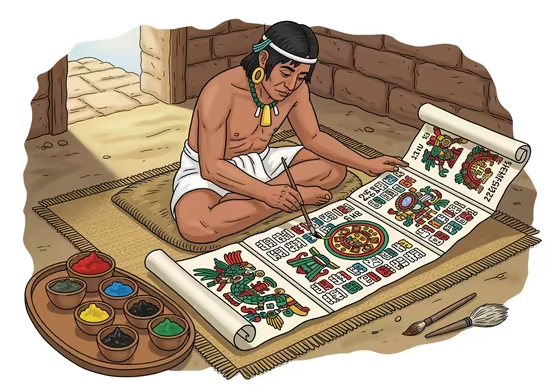
The Aztecs used different ways to share information, depending on what they needed. Their methods included their spoken language, written records, and the rules they followed in daily life. Each of these was a vital part of their society.
Their Language: Nahuatl
The main way the Aztecs communicated was by speaking their language, Nahuatl. This language has been spoken in Central Mexico for over a thousand years. When the Aztecs built their empire, Nahuatl became the main language used for government, trade, and talking with different groups of people.
Nahuatl is a special kind of language because it builds long, detailed words by joining smaller word parts together. It also had some unique sounds that are not common in English. Two of the most well known sounds are the "tl" sound and a short pause called a glottal stop.
The way Aztecs greeted each other showed how they saw the world. They didn't just say "hello." Their greetings were often about the situation. For example, a host might greet a tired traveler by saying something like, "You have worked hard to get here," to show they cared and to offer comfort.
A more general greeting that is still used in modern Nahuatl is Pialli (pronounced pee-ahh-lee). The Aztecs also had different greetings for the morning, afternoon, and night. This is a practice that many Nahuatl speakers continue today.
| English Phrase | Nahuatl Equivalent | Phonetic Pronunciation | Context/Notes |
|---|---|---|---|
| Hello (General Greeting) | Pialli / Niltze Tialli | pee-ahh-lee / nil-tzeh tee-ah-lee | A common, general greeting in modern Nahuatl variants. |
| How are you? | ¿Quen tica? | kehn tee-kah? | An informal way to ask after someone's well-being. |
| Good morning | Cualli tlanecic | kwal-lee tlah-neh-seek | Literally "Good dawn". |
| Good afternoon | Cualli teotlac | kwal-lee tay-oh-tlahk | Used in the afternoon and early evening. |
| Good night | Cualli yohualli | kwal-lee yoh-wah-lee | A common nighttime greeting or farewell. |
| Thank you | Tlazocamati | tlah-so-cah-mah-tee | Standard word for "thanks" in many modern dialects. |
| You're welcome | Ahmitla | ahh-mee-tla | Literally "(It's) nothing". |
| Goodbye | Timo-itazke | tee-mo ee-tahz-keh | Literally "We will see one another later". |
Nahuatl is part of a larger group of languages called Uto-Aztecan. Its closest relatives are languages spoken in western Mexico. It is also distantly related to languages in the United States, like Hopi and Shoshone, which shows that the ancestors of the Nahua people came from the north.
Writing with Pictures and Symbols
The Aztecs had a clever writing system that was very important for running their empire. It was not an alphabet like we use. Instead, it used a mix of pictures and symbols to record complex information.
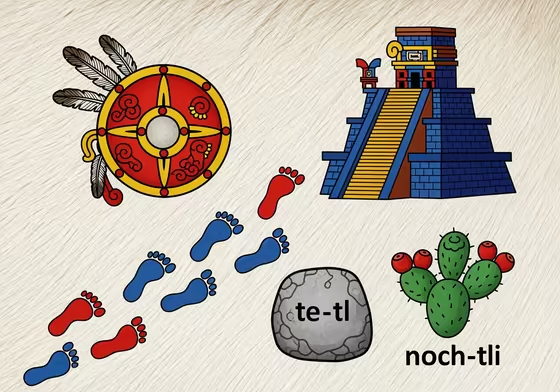
The Aztec writing system had three main parts:
- Pictograms: These were simple drawings of objects. For example, a drawing of a shield just meant "shield."
- Ideograms: These were symbols that stood for ideas. A drawing of footprints meant travel or movement, and a small scroll coming from a person's mouth meant speech.
- Phonetic Signs: The Aztecs also used symbols for their sounds, which helped them write down names of people and places. For example, the name of their capital, Tenochtitlan, was written by combining the picture for stone ( te-tl ) with the picture for a cactus ( noch-tli ).
This information was recorded in beautiful folded books called codices. These books were made from deer skin or paper made from tree bark. Highly trained scribes, known as tlacuilos , were the artists who created them.
These codices were like libraries of Aztec knowledge. They held records of tax payments, religious calendars, family histories, and maps. The writing system was flexible. For counting goods, it used a simple system of dots and symbols that made it easy to record large numbers.
Social Rules and Body Language
In the Aztec world, how people acted with each other showed their place in society. Communication was guided by a complex set of rules about greetings, gestures, and even eye contact. These rules were a way to maintain social order.
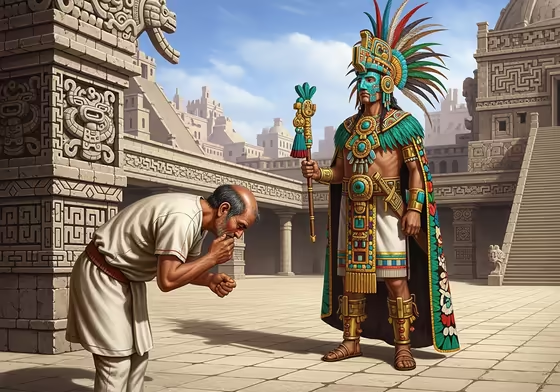
Greetings depended on who you were talking to. People of equal social rank might hold onto each other's arms. But when greeting a person of a higher rank, one had to bow low, touch the ground, and then bring that hand to their mouth.
Interacting with the emperor, the Huey Tlatoani , was the most strict. He was treated like a god, so no one was allowed to look at him directly or touch him. This meant bowing was very important to show respect while avoiding eye contact.
Avoiding direct eye contact was a common sign of respect. Young women, for example, were taught to lower their eyes when someone greeted them. These social rules were taught to children through a collection of moral teachings called the huehuetlatolli , which emphasized humility and respect.
A Network for Sending Messages

To manage a giant empire, the Aztecs created a fast and efficient communication network. This system was not based on technology but on organized and disciplined human runners. It carried the emperor's commands and important news across hundreds of miles.
The Empire's Relay Runners
The Aztec Empire was connected by professional messengers known as paynani , which means "fast runner." Only the strongest and fastest young men were chosen for this important job. They were trained to have great endurance and to know all the roads and shortcuts.
The system was so fast because it used a relay network. Small messenger huts were built every six miles or so along the main roads. A fresh runner was always waiting at each station to take the message and immediately start the next leg of the journey.
This method allowed information to travel without stopping, day or night. Runners could cover nearly 250 miles in a single day. The system was so good that Emperor Moctezuma could have fresh fish brought from the coast for his dinner in the capital city of Tenochtitlan.
Messages were usually spoken, with runners memorizing the information to pass it on. Sometimes, they also carried messages written with symbols on wood or paper. The messengers were specialized for different tasks:
- Painanis of the god Paynal: These runners carried messages about religious ceremonies.
- Yciucatitlantli: These were the fastest messengers, who delivered urgent news.
- Tequihuatitlantli: These were the war messengers, who carried news from the battlefield. The way a war messenger looked told everyone the result of a battle. If he entered the city with messy hair, it meant defeat. If his hair was tied and he carried his weapons while singing, it meant victory.
History of Aztec Communication
The story of Aztec communication is about growth and survival. It starts with Nahuatl becoming a major language and includes the creation of a unique writing system. The system was forever changed by the arrival of the Spanish.
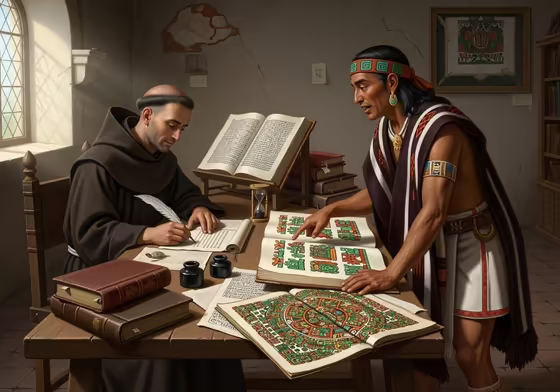
Nahuatl was an important language in Central Mexico long before the Aztecs. As the Aztec Empire grew, their version of Nahuatl became the main language for the entire region. Their picture-based writing system also developed to help them manage taxes and record their history.
The arrival of the Spanish in 1521 was a major turning point. The Spanish destroyed most of the Aztec codices, or books, because they saw them as evil. This act was a devastating loss of Aztec knowledge and history.
However, the Spanish also introduced the Latin alphabet. This gave the Nahua people a new tool to write down and preserve their culture. Newly literate Nahua scholars used the alphabet of their conquerors to write books about their own history, poems, and beliefs.
This work helped save their culture from being completely lost. For example, the famous Florentine Codex is a 12-volume encyclopedia of Nahua culture created by a Spanish friar working with Nahua scholars. The Spanish also needed Nahua allies as interpreters, which helped the Nahuatl language survive.
The Nahuatl Language Today
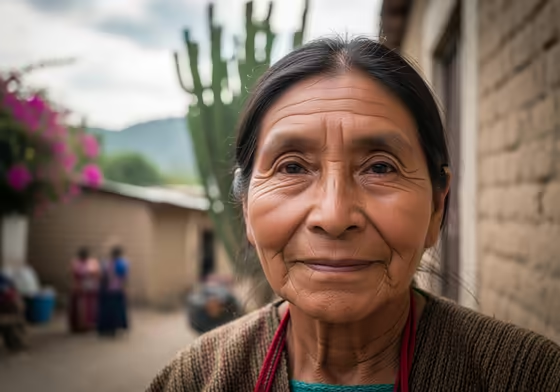
The language of the Aztec Empire was never truly lost. Today, Nahuatl is a living language, and people are working hard to keep it and its traditions strong. The legacy of Aztec communication continues to influence modern Mexico and the world.
Who Speaks Nahuatl Today?
About 1.5 million people in Mexico still speak Nahuatl today. This makes it the most common indigenous language in the country. Most speakers live in rural communities in central Mexico.
Even with so many speakers, the language is considered at risk of disappearing. For many years, Spanish was seen as more important in schools and government, so fewer children learned Nahuatl. However, in 2003, the Mexican government officially recognized Nahuatl as a national language with the same rights as Spanish.
Today, there are more opportunities to learn Nahuatl. Some schools in Mexico have started teaching the language. Universities and cultural centers in other countries also offer classes for those who want to learn.
Keeping the Language and Culture Alive
Modern Nahua people often communicate using both Nahuatl and Spanish. A strong movement is working to make sure the language survives for future generations. This includes government programs creating new school materials and local communities training new teachers.
The legacy of Aztec communication is also alive in art and culture. Modern artists use the traditional folded book style of the codex to create new art about their identity and history. A new generation of Nahua poets is also writing powerful works in their own language.
The most common legacy of Aztec communication is in the words we use every day. When the Spanish came to Mexico, they found new plants and animals. They adopted the Nahuatl words for them, and words like chocolate ( xocolātl ), guacamole ( āhuacamōlli ), and coyote ( coyōtl ) are now used in English and many other languages around the world.
| Modern Word (English/Spanish) | Original Nahuatl Word | Literal Meaning / Origin |
|---|---|---|
| Food | ||
| Avocado / Aguacate | āhuacatl | "Avocado" or "testicle" |
| Cacao / Cocoa | cacahuatl | The bean from which chocolate is made |
| Chili / Chile | chīlli | Chili pepper |
| Chocolate | chocolātl | A beverage from cacao |
| Guacamole | āhuacamōlli | From āhuacatl ("avocado") + mōlli ("sauce") |
| Mole | mōlli | "Sauce" |
| Tamale / Tamal | tamalli | Steamed masa dough, often with a filling |
| Tomato / Tomate | tomatl | A type of small green tomato |
| Animals | ||
| Axolotl / Ajolote | āxōlōtl | From ātl ("water") + xōlōtl ("servant" or "dog") |
| Coyote | coyōtl | The canid native to North America |
| Ocelot / Ocelote | ocēlōtl | Originally meant "jaguar" |
| Quetzal | quetzalli | The long, colorful tail feather of the quetzal bird |
| Other | ||
| Chipotle | chilpoctli | From chīlli ("chili") + poctli ("smoke"); a smoked chili |
| Copal | copalli | A type of tree resin used as incense |
| Shack / Jacal | xahcalli | "Straw-roofed hut" |
| Tianguis | tiānquiztli | An open-air market |